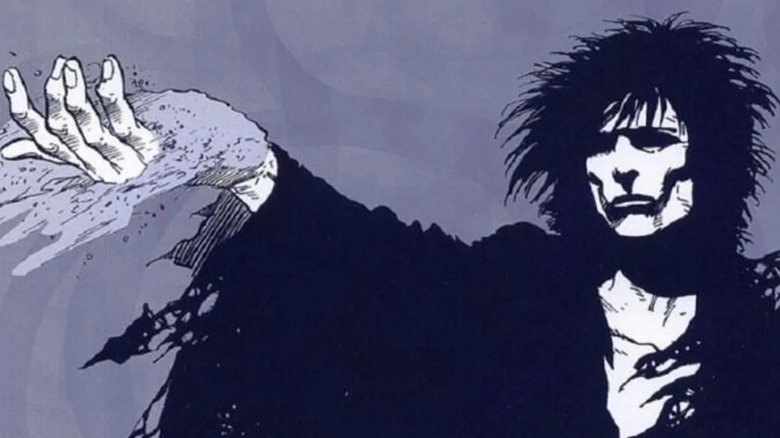The Origin Of The Sandman, As Explained By Neil Gaiman
Neil Gaiman's "The Sandman" explores the tale of the titular primordial figure known as Morpheus, the Lord of Dreams. The original comics series ran for 75 issues since its debut in 1989 and has gained popular acclaim ever since. But how did Gaiman come up with the idea of creating such a vibrant comics series in the first place?
/Film's Danielle Ryan asked Gaiman about the origins of "The Sandman" during a press event for the upcoming Netflix adaptation of the comics series, and here's what he said:
"The initial germ of the idea for the Sandman comics was DC Comics saying to me, we'd like you to do a monthly comic to try and raise your profile ... So when I was trying to come up with an idea for a comic back then, I wanted something that I could go anywhere with. I didn't know if I could write a monthly comic, but I thought, well, I'll give myself the widest possible playing ground, and the idea of an immortal being who had been around since the beginning of time who was in your dreams, gave me historical, gave me horror, gave me fantasy, gave me contemporary, even gave me science fiction if I wanted it..."
Prior to working on "The Sandman," Gaiman, along with comic artist Dave McKean, worked on a three-issue limited series called "Black Orchid" for DC Comics, which was released in 1988. As explained by Gaiman above, DC Comics approached Gaiman with the idea of doing a monthly comic, and the author reworked some concepts originally cut from "Black Orchid" and incorporated them into his pitch for "The Sandman." Gaiman worked with a broad starting point and chiseled his ideas along the way, ending up with a rich world filled with complex characters.
Bringing The Sandman to life on screen
While explaining the origins of "The Sandman" as a comic, Gaiman explained that he deliberately worked with a broad sensibility that could contain various genres within it. Vol. 1 of "The Sandman," "Preludes & Nocturnes" opens with an occult mystery with horror undertones, wherein mage Roderick Burgess accidentally traps Morpheus instead of his sister, Death. However, the tone of the comics is wide in range and constantly shifting, as the events alternate between the Dreaming and Waking worlds, while also introducing us to other realms, such as Hell.
Per Gaiman, this aspect of the comics has been faithfully depicted in the Netflix adaptation, as the episodic nature of the series helped capture the varying tones and genre-hybridity of the comics:
"I think that sensibility of, we can go anywhere, that sensibility of, you do not know where the next episode is going to take, you don't even know the genre of the next episode and whatever the next episode is, you're not prepared for it. I feel like that actually translated beautifully onto the screen."
While it remains to be seen whether the Netflix series is able to capture the dizzying, visceral nature of the comics, the show needs to progress the story organically while setting up key characters convincingly. After all, "The Sandman" is not just Morpheus' story, as the comics deftly weave a world surrounding the titular character that is dense and interesting in its own right. The scope of "The Sandman" is vast, as it incorporates myth and fantasy to create an interconnected story with equally great one-off tales, bringing historical figures into the mix to make things even more intriguing.
"The Sandman" premieres on August 5, 2022 on Netflix.

